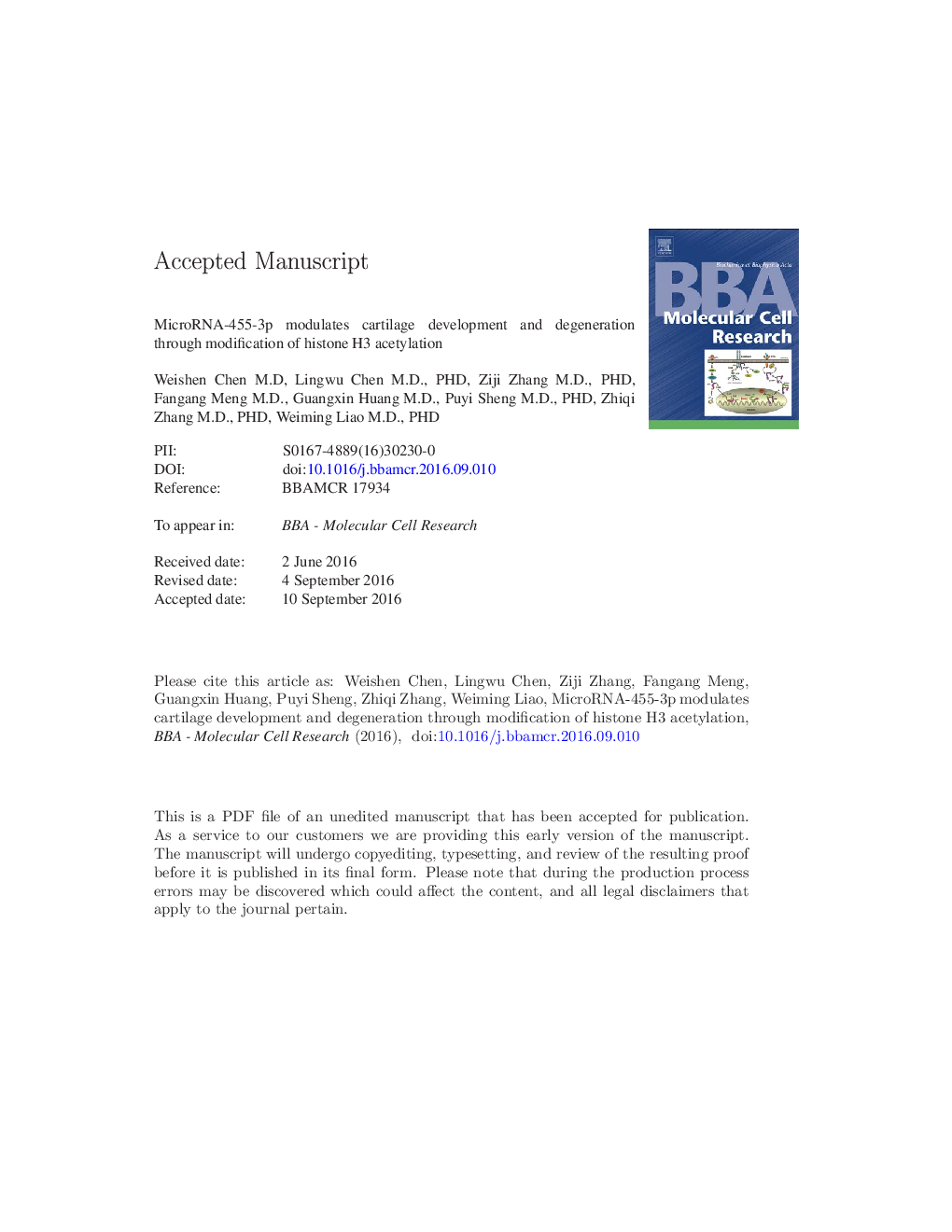| Article ID | Journal | Published Year | Pages | File Type |
|---|---|---|---|---|
| 5508792 | Biochimica et Biophysica Acta (BBA) - Molecular Cell Research | 2016 | 35 Pages |
Abstract
Histone acetylation regulated by class I histone deacetylases (HDACs) plays a pivotal role in matrix-specific gene transcription and cartilage development. While we previously demonstrated that microRNA (miR)-455-3p is upregulated during chondrogenesis and can enhance early chondrogenesis, the mechanism underlying this process remains largely unclear. In this study, we characterized the effect of miR-455-3p on histone H3 acetylation and its role during cartilage development and degeneration. We observed that miR-455-3p was highly expressed in proliferating and pre-hypertrophic chondrocytes, while HDAC2 and HDAC8 were primarily expressed in hypertrophic chondrocytes. Meanwhile, miR-455-3p suppressed the activity of reporter constructs containing the 3â²-untranslated regions of HDAC2/8, inhibited HDAC2/8 expression and promoted histone H3 acetylation at the collagen 2 (COL2A1) promoter in human SW1353 chondrocyte-like cells. Treatment with the HDAC inhibitor trichostatin A (TSA) resulted in increased expression of cartilage-specific genes and promoted glycosaminoglycan deposition. Moreover, TSA inhibited matrix metalloproteinase 13 (Mmp13) expression and promoted nuclear translocation of SOX9 in interleukin-1-treated primary mouse chondrocytes. Lastly, knockdown of HDAC2/3/8 increased SRY (sex-determining region Y)-box 9 (SOX9) and decreased Runt-related transcription factor 2 (RUNX2) expression. Taken together, these findings suggest that miR-455-3p plays a critical role during chondrogenesis by directly targeting HDAC2/8 and promoting histone H3 acetylation, which raises possibilities of using miR-455-3p to influence chondrogenesis and cartilage degeneration.
Keywords
Related Topics
Life Sciences
Biochemistry, Genetics and Molecular Biology
Biochemistry
Authors
Weishen M.D., Lingwu M.D., PHD, Ziji M.D., PHD, Fangang M.D., Guangxin M.D., Puyi M.D., PHD, Zhiqi M.D., PHD, Weiming M.D., PHD,
